
Beer is a great companion. That’s the philosophy of Boston-based Harpoon Brewery. Beer is a celebratory beverage meant to be enjoyed with others — whether you’re rally toasting at a Red Sox game or honoring a powerfully poor showing at a 5 mile race in the Seaport District with proceeds going to ALS Research. Even today, almost half of Harpoon’s beer goes out packaged on draft. That’s a stat that shows Harpoon beer is meant to be shared.
“We’ve stayed true to the idea that was important to us when we launched — that there is something magical when you pair great beer with great people in a great experience. For us, it’s never been about just one or the other,” explained Al Marzi, Harpoon Brewery’s chief brewing officer.
Harpoon Brewery has of lot of experience itself. It’s a vintage craft brand, especially in the New England region, and has breweries in both Boston and Windsor, Vt. Harpoon celebrated its 30-year anniversary in 2016 (a year it produced 198,300 bbls of beer, making it the second-largest brewer in the state behind Boston Beer Co.). It’s also Massachusetts’ oldest still operating brewery. In 2017, Harpoon ranked as the 16th biggest craft brewer in America and 28th overall. Such longevity required a tactical amount of growth — multiple breweries, distribution to 27 states and Puerto Rico, 300 employees, evolving products, big events and even new brands and companies. It comes for humble beginnings.
“I think you’ll hear this from a lot of the folks who have been doing this for a while. We didn’t set out to help create a category,” Marzi said. “We had no idea craft beer would become what it has. There were days — particularly in the early nineties — when it didn’t feel at all like we were doing something with staying power. Looking back, it’s easy to weave a visionary narrative, but the fact is we started off to do something small, in our region.”
But the future could be even more humbling. Today’s beer marketplace is the fiercest it’s ever been, and elder New England craft beer staples from Smuttynose to Boston Beer have endured financial hardship in the last few years. Harpoon’s philosophy: Stick to its core values and increase the experience factor of the brand. Massachusetts Bay Brewing Co. (the mothership that owns the Harpoon brand and also UFO Beers) has found some innovative ways to do this.
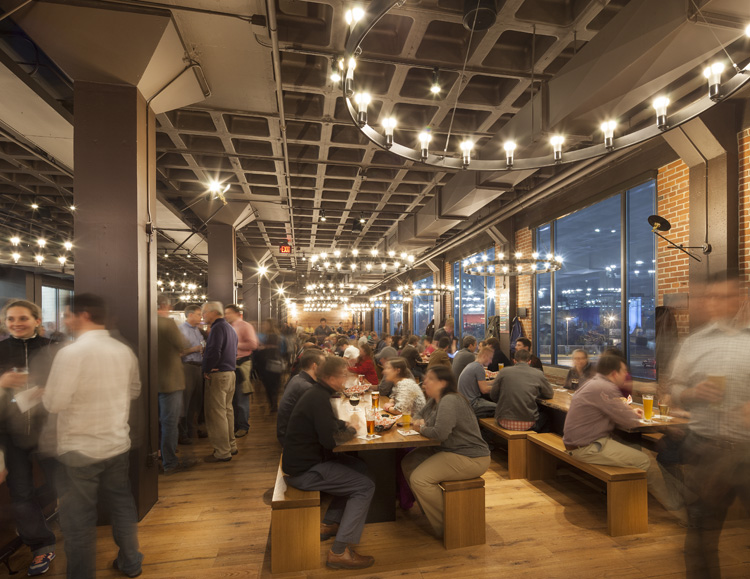
In the last four years: Mass Bay Brewing has gone employee-owned. It has agreed to contract brew and can for Great Lakes Brewing Co. It has purchased the progressive brands behind Clown Shoes Beer. The latter is particularly interesting. Clown Shoes is a small-batch, barrel-aging, state-specific beer brand. Harpoon is a brand known for big fermenters full of classic craft nameplates. So, what do all of these business moves have in common? The ability to share the Harpoon experience — as an employee, as a business partner, as a subsidiary and as the consumer.
All of this got us thinking: We should probably snag someone at Harpoon to share these wacky connections we are making. Marzi, who started at the brewery as a delivery driver and climbed the ranks over the past 25-plus years, kindly obliged.
Hey Al, first off, thanks for taking the time. We know you’re busy and appreciate it. Maybe we can just briefly go over how big Harpoon Brewery is today? Can you throw some stats at us?
We sold about 185,000 barrels in 2017 — that’s for Harpoon and UFO only — throughout 27 states and Puerto Rico. We make and sell it all with around 300 total employees between two breweries. Boston produces approximately two-thirds of the production, and Windsor, Vt., makes up the remaining third. For the most part, we brew all beers in both locations, with some key exceptions. Our canning line, for example, is in Boston, and our 22-oz bottling line is in Windsor.
What do you think drew Mass Bay Brewing Co. to Clown Shoes Beer? How do you feel that brand fits in the portfolio with Harpoon and UFO?
Gregg Berman, the founder of Clown Shoes, put it best when he said that Clown Shoes was a brewery without a home [Clown Shoes contracted out its brewing], and Mass Bay Brewing Co. was a company without a brewery like Clown Shoes. Simply put, everyone was attracted to the acquisition because we had tremendous respect for our collective brands, and they were distinct enough to appeal to different consumers. There was also a real cultural attraction between the two teams. We grew to really like and respect each other and the way we do business. We all feel that the brand is a great addition to the Mass Bay portfolio alongside Harpoon and UFO.
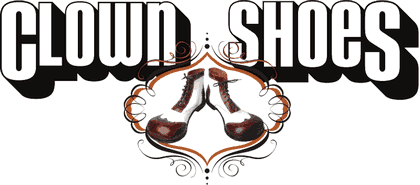 Clown Shoes does stand out. The brand’s vibe, packaging and styles seem fairly different than Harpoon. Do you have plans to bring some of that aggressive, small batch mentality to Harpoon? Do you have plans to take Clown Shoes products to bigger markets and packaging? How do you feel you’ll collaborate together?
Clown Shoes does stand out. The brand’s vibe, packaging and styles seem fairly different than Harpoon. Do you have plans to bring some of that aggressive, small batch mentality to Harpoon? Do you have plans to take Clown Shoes products to bigger markets and packaging? How do you feel you’ll collaborate together?
We love that they’re different, so we wouldn’t try and combine them in any way. Our goal is to manage all the brands independently while pushing each other to make and sell the best beer we possibly can. So, there will absolutely be some cross-pollination of ideas, and I think you’ll see some of that sooner than later. But we’d love for Clown Shoes, Harpoon and UFO to maintain their distinct characters that have made them successful.
ESOPs are extremely cool. Give us your impressions on ESOPs and why you think it’s important to Harpoon’s culture and success. Any advice for others out there?
ESOPs are indeed extremely cool. It’s been almost four years since we made the shift to employee ownership, and it was absolutely the right decision for our team. In many ways, we already had an employee-owned mindset before we made the transition. So, becoming employee-owned changed everything and, at the same time, very little. It definitely gives everyone here an even larger sense of pride over what we do every day. One of our mantras has always been “Love Beer. Love Life.” And loving your job is an important component of that. As for advice for other breweries that might be considering making the move to employee ownership: follow your path. Our path led us to employee ownership, and we are very happy it did. Yours may not. Be true to your vision and transparent about what that vision is.
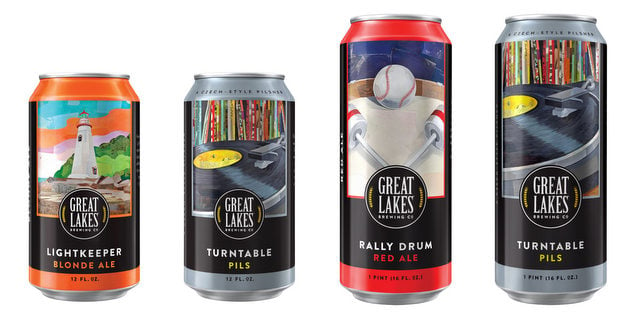
Last year, Harpoon collaborated with Cleveland’s Great Lakes Brewing to package several varieties of Great Lakes beer in cans. How is that relationship going?
We should clarify that this was a contract brewing arrangement, not a collaboration. They came to us in large part because of our ability to meet their incredibly strict production standards. We love their beer and were happy to hear from them. The fact that they are family-owned and we are employee-owned made it all a little more fun.
Do you see Harpoon reaching out and working with other brewers in these types of contract situations? Is that something Mass Brew is seeking out?
We’re open to it, sure, but not necessarily seeking it out. We’ve been lucky to have friends in the industry who need capacity when we have some and, over the years, vice versa. Its one of the best parts of being in this business.
Let’s shift topics and talk some shop. Let’s talk about a unique ingredient you guys and gals are using these days — coriander. It’s a spice Harpoon is experimenting and pushing with brands like its Harpoon Lime-Y Vice gose. What are brewers doing to innovate using coriander and other herbs and spices in new beers?
We were one of the first breweries on the East Coast to use coriander in a big way when we started brewing UFO White, and we’ve brought it to some other Harpoon and UFO beers over the past few years. It’s a fun spice and one at the forefront of the flavor innovation movement we’re seeing craft beer. From peanut butter to chia to vitamins and more, craft beer continues to evolve in a really fun way.
Coriander is a spice that is mainly used with Belgian wits but can also be found in saisons, goses and other Belgian beers. The seed is capable of providing huge flavors from just a small amount and provide some citrus notes, but mostly provide peppery and rosemary notes. When adding coriander to a beer that already has hops, the two can play together and amplify existing flavors while creating notes that linger after being sipped.
It being summer and all, tell me about the Harpoon Lime-y Vice.
It’s a citrusy gose packed with tart lime and hints of salt and coriander. It tastes like summer in a glass, and we’ve had a really good response to it so far. We just released it this season. Not only is the beer itself good, but the design team did a great job with the packaging. It’s electric, high energy and gives off vibes of Miami beaches.
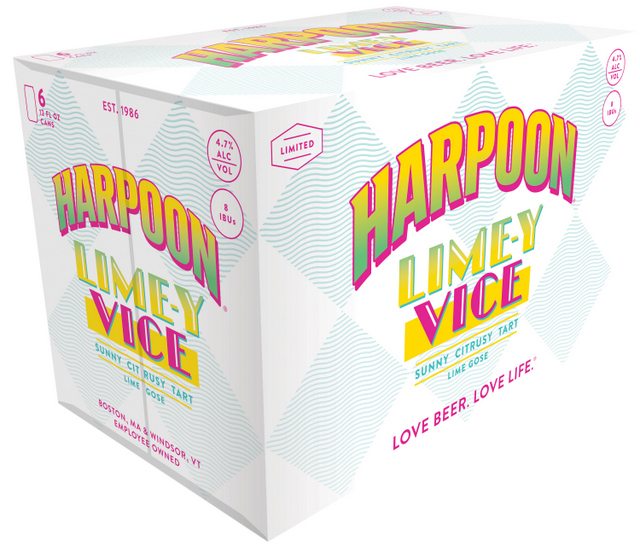
It’s definitely got some fun packaging. Harpoon overall did a brand refresh a few years back. Can you go over some of the factors and ideas that went into the brand redesign? What needed to change and what was important to stay the same?
We did. And it was really the first time in our history we undertook something on that scale. But it was time. We frankly felt that the essence of the brand — Love Beer. Love Life. — needed to shine, and that we needed to do a better job of letting our unique approach to beer and brewing come through more. So a lot changed, but a lot stayed familiar as well, and we like it that way.
Moving to the equipment side, have you made any new equipment purchases lately?
It’s hardly techy, but we just bought new coolers for our retail spaces. May not sound exciting, but as we expand our portfolio to include more one-offs and short runs, we wanted to dedicate space to those products. We just launched Juicer, our take on a New England IPA, so it’s the first product there. We also just picked up a Slushee machine. That one’s still in the experimental phase, but we may have some fun stuff for the folks who visit us one of these days.
Harpoon IPA is a classic. You pioneered hoppy beers in Boston. Have you noticed any hop trends of late? Are prices going down? Are certain varieties still hard to find? Is the market saturated?
There are very few hops that are in short supply. That said, more hops have been planted in the past few years and with a slow down with some of the larger craft brewers there will be a bit of a surplus of some hop varieties in the next few years. This will lead to a softening of prices. So, plan wisely! The cycle of hop harvests can be tricky.
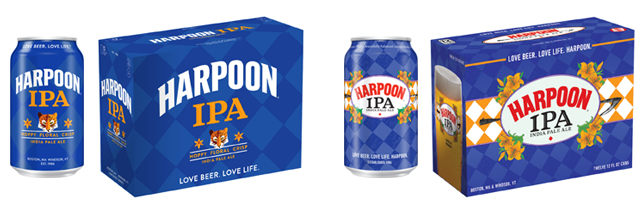 Harpoon is what I’ll call a classic craft brand. Some of these veteran brands — take Smuttynose or Boston Beer Co. for instance — are seeing shrinking sales or financial troubles with the increase of new competition in the market. How is Harpoon adapting in this environment? What has your company done to stay relevant, protect or increase market share or maybe even scale back in response to this crazy, 6,000-plus brewery market that we have today?
Harpoon is what I’ll call a classic craft brand. Some of these veteran brands — take Smuttynose or Boston Beer Co. for instance — are seeing shrinking sales or financial troubles with the increase of new competition in the market. How is Harpoon adapting in this environment? What has your company done to stay relevant, protect or increase market share or maybe even scale back in response to this crazy, 6,000-plus brewery market that we have today?
Thanks. We’ll take classic! The U.S. is now the best place to drink beer in the world, thanks to the growth of craft and a lot of hard work by many of us. The challenge for all of us now is that beer needs to grow. We can talk about what’s happening inside the category, but if we miss out on what’s happening in terms of shifting palates outside the category, we’re in trouble.
For us, that actually means doing a better job of finding calm during the storm. Focus on the things that will help you to not just weather the challenging stretches but to flourish, and focus on the things we value the most — our people, employee-owners and our fans, and our brands. It sounds simple, and it is in theory, but it takes an enormous amount of discipline to balance those objectives.
Craft growth is showing signs of slowing — and we may see a decline in certain markets. Openings and closings are ramping up. It’s the frothiest I’ve seen the industry in the last 15 years. We have focused on innovation and have been digging deep to make sure our portfolio reflects our vision, but we’re trying to focus more on what we bring to the table than what others are doing.


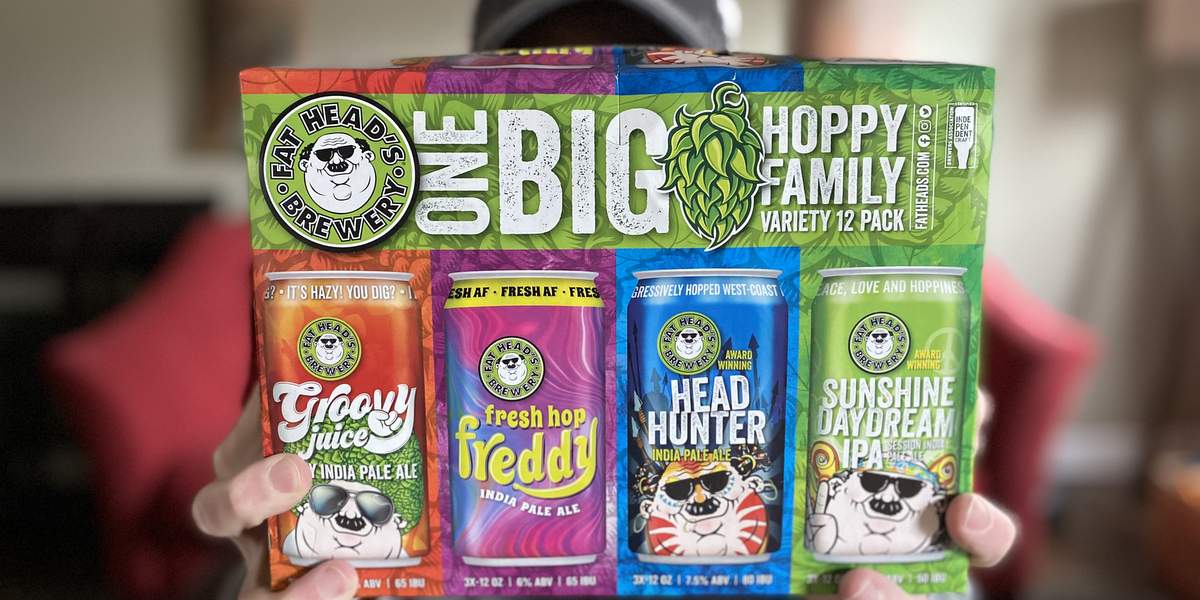
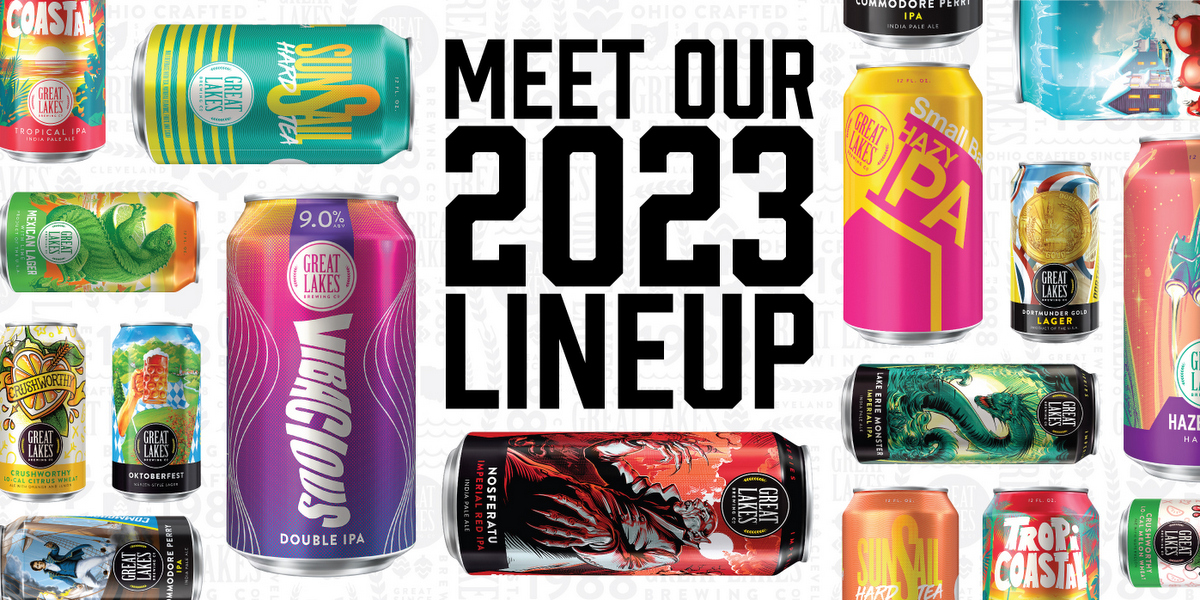
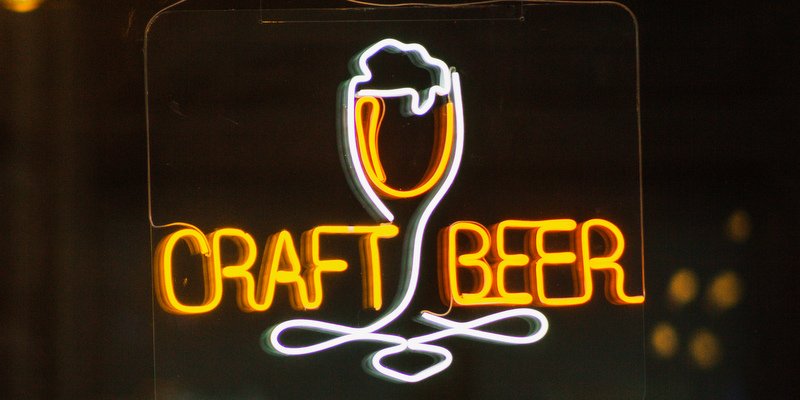
thecruizer1 says
Hi Al, Had any good Bloody Marys lately!?! – Dana